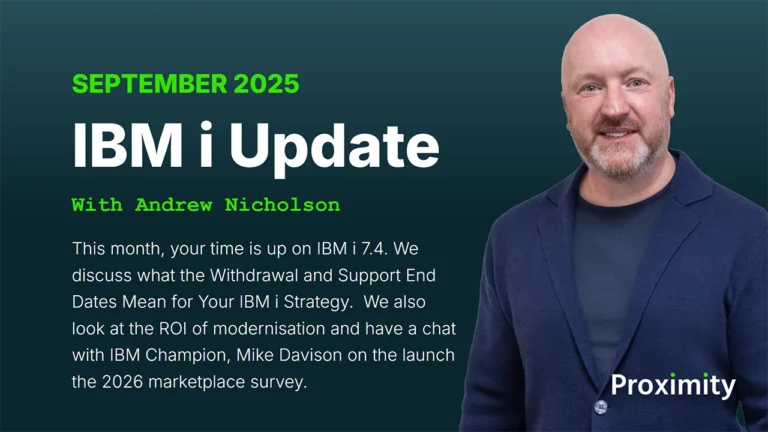With no known viruses and reported security breaches extremely rare (especially compared to Windows or UNIX-based servers), the IBM i has earned its reputation as one of the most secure and reliable systems used in business today.
Businesses may use more Windows PCs and servers than IBM i systems, but certain industries have a huge number of IBM i systems in place across the globe.
Banking and finance institutions, manufacturing facilities, logistics and retailers are all sectors where the IBM i plays a huge part.
Organisations in these industries – particularly in banking and finance – are especially attractive to hackers or viruses, and the security stakes are particularly high.
Many of the people who’ve worked with the IBM i (or its earlier iterations the AS/400, System i, and iSeries systems) could have developed the technical skills to cause problems. So why haven’t they?
A highly secure system
Due to its reputation as a fortress-like system designed for security and stability, overall system security on the IBM i can often be overlooked. Valuable company data, therefore, can fall vulnerable to breach and exposure.
Isolated systems, connected only to dedicated terminals, seemed impenetrable – but that is no longer the reality in today’s connected world.
The activities which, in the closed environment of the AS/400, seemed impossible are now carried out remotely. Developers can initiate commands, install or activate programs, update or erase data, and move or copy files to and from IBM i servers from anywhere in the world.
While that brings the convenience and flexibility needed by global organisations – especially with so many of today’s workers on lock down in their homes – connected systems are more vulnerable to attack.
Ever since the very first moment that an AS/400 connected to a PC, new weaknesses began to appear.
As IBM i servers gained popularity, hosting a variety of different systems, the need to protect against hackers and viruses has continued to rise.
How has the IBM i maintained its reputation for reliability and security?
While disconnecting completely from networks protect an IBM i system, it just isn’t a viable option today. A return to isolated systems would put organisations at a significant disadvantage, unable to use the IBM i to its full capacity. Organisations today need to remain connected.
The good news? It is still possible to keep the IBM i completely secure. By continually managing the IBM i’s inherent security vulnerabilities, organisations can have the best of both worlds: the advantages of a connected IBM i system, with the security levels that the IBM i is known for. Organisations must define and implement policies on:
- System security
- Access controls for objects
- Protection against malware and viruses
- Encrypting data and interfaces
- Internal and regulatory auditing
Understanding your IBM i security needs
Our partners, Raz-Lee Security, have released this whitepaper that helps organisations to assess, detect and protect against security issues for their IBM I. Download it to get a better understanding of the security challenges of a connected IBM i.
Download Free ‘Understanding Your IBM i Security Needs’ Whitepaper
We take your Privacy very seriously. Learn more about our Privacy Policy.





